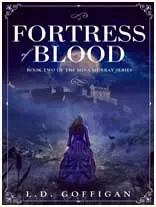What Are the Five Stages in Narrative Writing?

Great storytelling requires more than inspiration; it is a journey marked by structure. Narrative writing can bring clarity, feeling, and transformation to the page, whether the writer aims to create a memoir, a piece of fiction, or fabricate a captivating brand story. Here at Ghostwriters Planet, we have narrative writing services that have sprung from a thorough understanding of the writing process. All engaging narratives, be they fiction or nonfiction, go through five stages. These stages may not provide a rigid doctrine but serve more as guideposts upon which a writer can lean to transform raw ideas into powerful narratives that will resonate with readers. In this article, we will discuss the five stages in narrative writing, including how they fit together and why having the support of an industry professional is going to elevate each phase.
Stage 1: Prewriting-So Where Does the Story Start?
The prewriting stage is where everything begins. Before a single word surges from the writer’s clamor, ideas are generated, looked upon, and crystallized. It is a stage of asking questions:
What is the main theme or message of the story?
Who is the hero, and what journey are they on?
What incidents or experiences must come into the mix?
What feelings or reactions should the audience be feeling?
With respect to narrative writing, utmost articulation at this stage will avoid subsequent confusion. A writer could decide to brainstorm, sketch major plot points, outline character arcs, or outline real-life events in the case of autobiographies.
Stage 2: Drafting-Down the Story Begins
The foundation has been set; now is the time to give the manuscript its first draft. It is the moment for the story to take shape, a transformation from an abstract concept into the concrete: scenes, dialogue, and description.
Drafting deals with:
Getting the story going
Introducing conflict and stakes
Character development and relationships
Beginning, Middle, and End
This stage is about making progress and nothing else. Writers should feel free to write without excessive self-censorship. The first draft is about being raw, capturing the passion, energy, and voice of the narrator.
A narrative writing professional finds the balance between structure and creativity, making sure that the story is credible while providing a sensible flow of plots.
Stage 3: Revising From Heart to Heart of the Story
The revision turns a raw first draft into an interesting and cohesive story. At this stage, the editor is able to change their focus towards major issues such as:
Does the story feel natural?
Are characters credible and consistent in their actions?
Does the scene sequence maximize story effectiveness?
Is the emotional arc rewarding and meaningful?
The writer can now shuffle chapters, rewrite whole sequences, or cut subplots that stray from the main narrative. There might have been several rounds of revision-notably in professional storytelling projects.
Ghostwriters Planet finds this stage absolutely crucial in professional narrative writing services. Every effort is made to ensure that client input remains prominent as stories are revised for clarity, dramatic emphasis, and impact. This is where mediocrity starts turning into real excellence.
Stage 4: Editing-Polishing the Prose
Editing is more distinct from revision than a series of minor differences would suggest. The revision reshapes content; editing refines language, grammar, and style. The smooth reading of content, continuous application of rules, and freedom from distractions are the targets.
Distractions may include:
Spelling or grammatical errors
Awkward phrasing
Pacing issues
Repetitive language
Changes in tense or point of view
Formatting and fact-checking would also take place here, a very important step to consider in nonfiction narratives (memoirs and even autobiographies, of course).
Stage 5: Publishing/Finalizing-To Share the Story with the World
This final phase of narrative writing will see the manuscript dressed to fit its intended audience, which can mean any of the following, depending on the project:
Formatting for self-publishing or traditional submission.
Creating a book proposal or synopsis.
Designing layout and cover for print or digital formats.
Creating web or promotional content for launches.
For corporate narratives, this could involve adapting the story to email campaigns, websites, and presentations.
Ghostwriters Planet lends its support to this phase through its helping hand in publishing pathways, design and format services, and any connections to other industry players as required.
Why Work with Professional Narrative Writers?
Anyone can tell a story. But telling it really well, with structural development, emotional richness, and professional shine, is an art.
Here's how our professional narrative writing services make an impact:
Clarity and cohesion: We take memories or plot points that are splintered and make them powerful, whole stories.
Preserving the voice: Your story still sounds like you-but at your most arresting.
Industry experience: Our writers know what readers expect and how to exceed those expectations.
Support from beginning to end: We walk with you every step, from outlining to publishing.
Whether you are writing a book, a speech, life stories, or creative projects, Ghostwriters Planet makes sure to bring your vision to life: ethically, creatively, and professionally.
Conclusion: Every Great Story Starts with Structure
Understanding the 5 stages of narrative writing, prewriting, drafting, revising, editing, and publishing-empowers writers to approach storytelling with clarity and intent. Through the partnership with professional narrative writing services, your story becomes more than a string of events; it becomes an odyssey to transformation that resonates in the hearts of your readers.
limited Time offer
- 00
- 00
- 2





